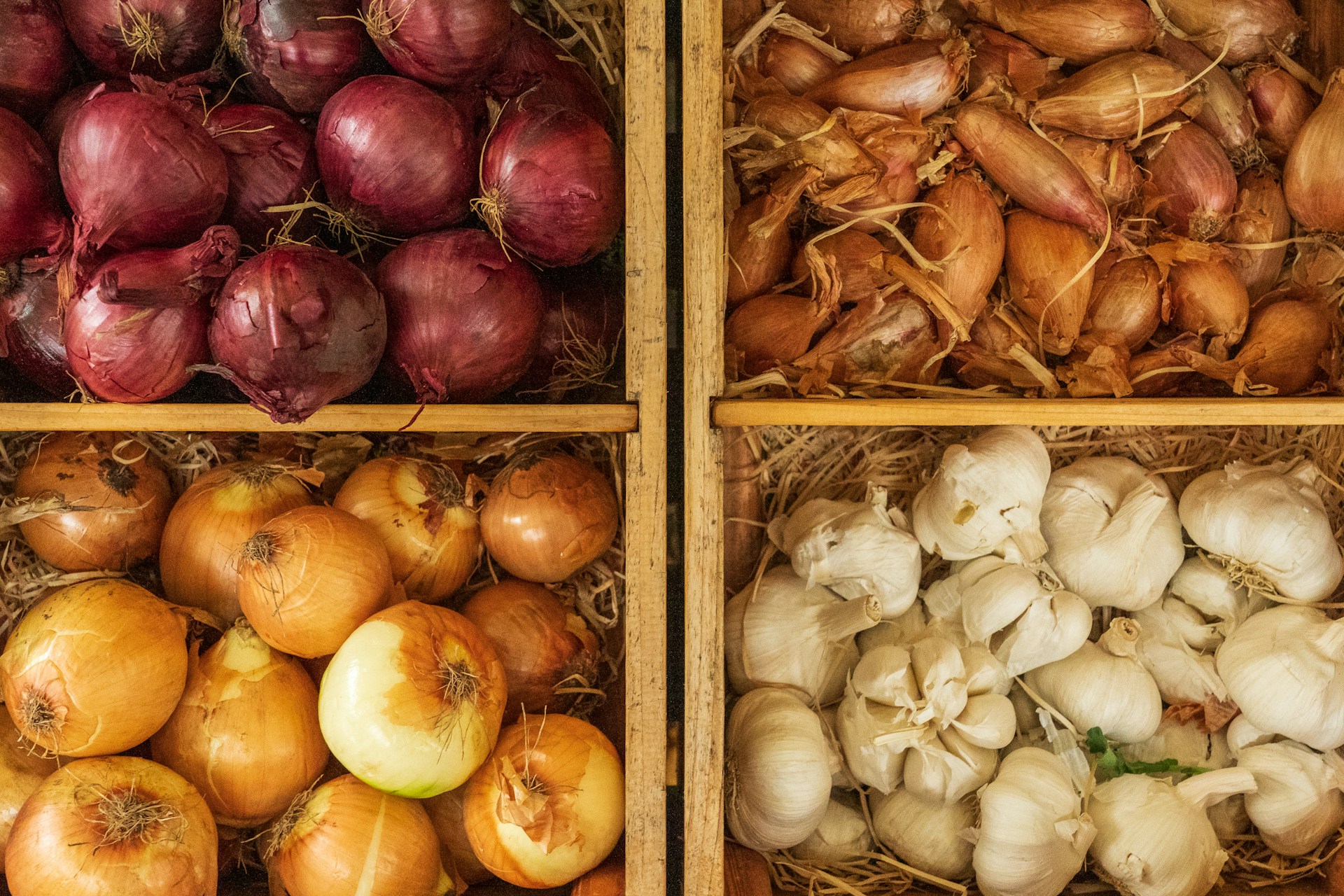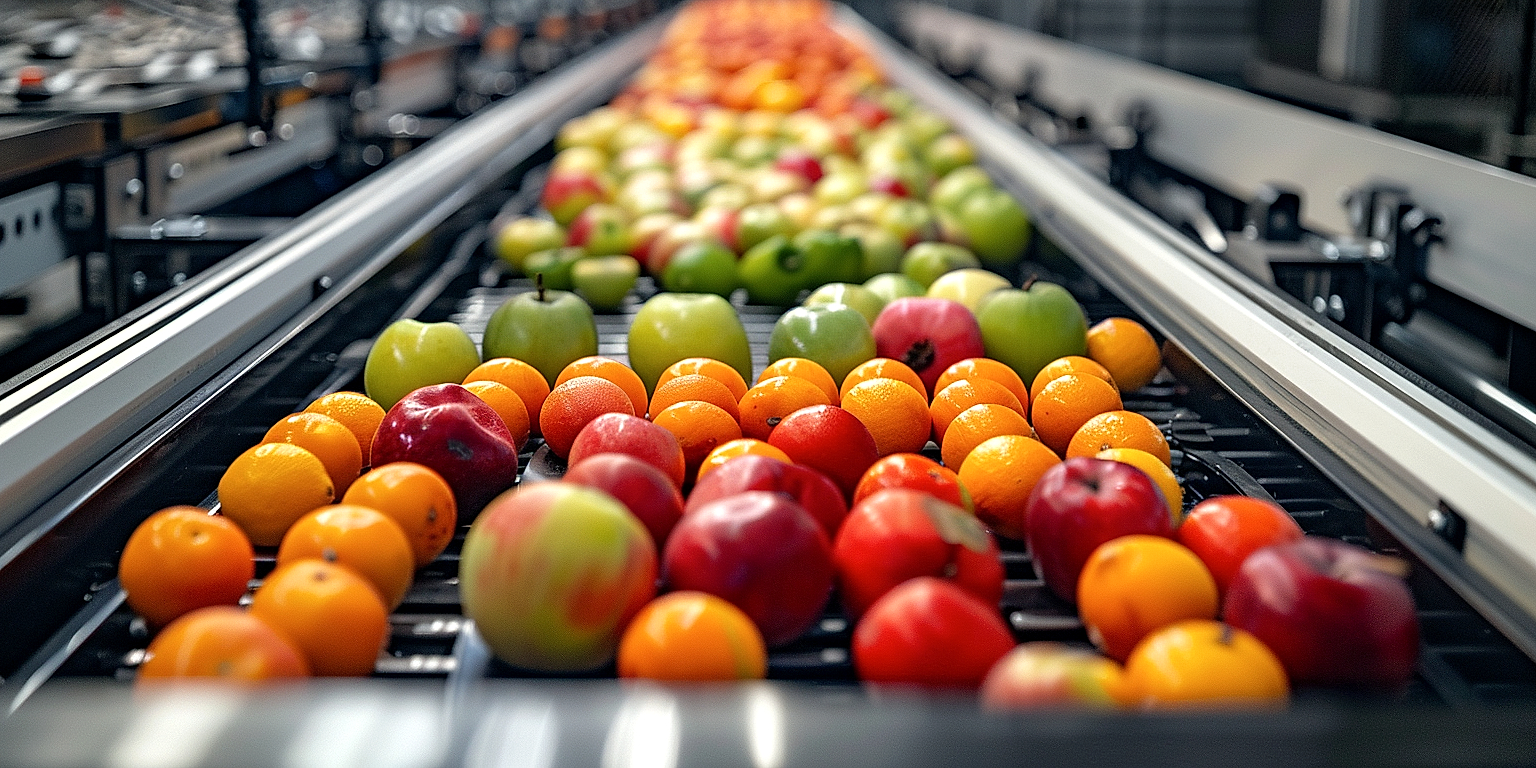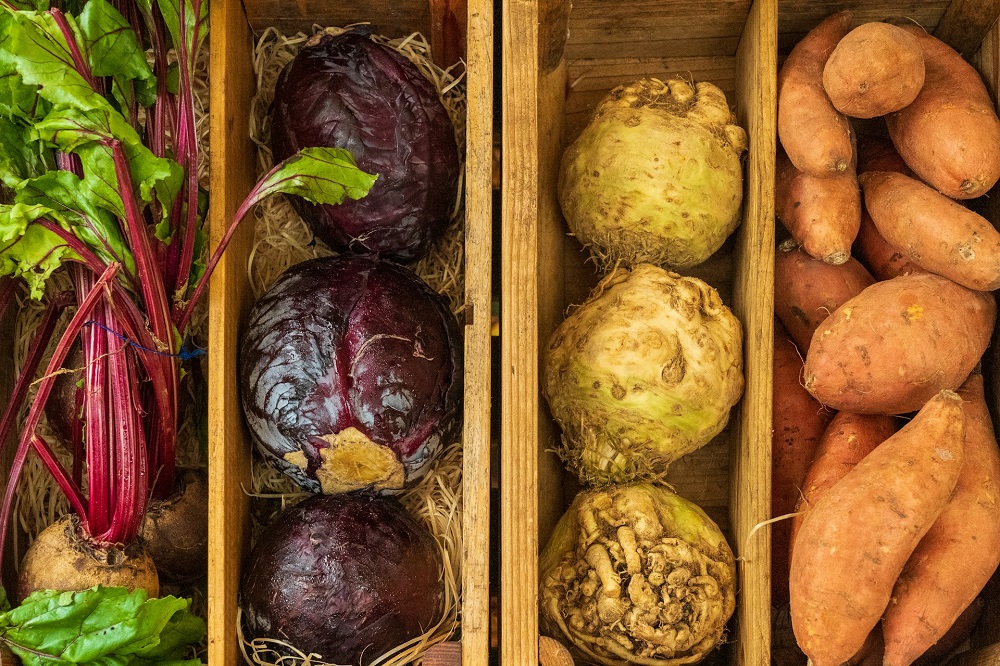Efficiently distributing fresh produce to various locations can pose significant challenges.
Success in this field depends heavily on careful planning and strategic route selection.
This is because time-sensitive items like fruits and vegetables require proper transport conditions and quick delivery to maintain their quality.
Inadequate route planning can result in spoilage and financial loss.
Hence, an effective and efficient route planning strategy is crucial for business operations.
Today, we delve into several route planning tips that can help prime your produce distribution for success.
Contents
- Route Planning Tips For Smoother Produce Distribution
- 1. Ensure vehicles are properly maintained and fueled.
- 2. Plan routes avoiding high traffic or construction areas.
- 3. Utilize GPS technology for optimal route planning.
- 4. Schedule Deliveries During Off-Peak Hours
- 5. Regularly update drivers about road conditions.
- 6. Use temperature-controlled vehicles for perishable produce
- 7. Group Deliveries by Geographical Proximity
- 8. Maintain backups for unexpected route changes
- 9. Use a Reliable Route Optimization Software
- 10. Implement a tracking system for real-time monitoring
- The Bottom Line
Route Planning Tips For Smoother Produce Distribution
1. Ensure vehicles are properly maintained and fueled.
Route planning in the niche of produce distribution is an intricate task that requires meticulous strategizing, and one of the topmost priorities is ensuring that vehicles are properly maintained and fueled.
The state of the vehicles plays a significant role in how smoothly and efficiently the entire distribution process unfolds.
Vehicles that are not well-maintained can cause unpleasant disruptions in the delivery schedule, affecting the overall efficacy of the distribution chain.
Deteriorating vehicles have a higher likelihood of breaking down in the middle of deliveries, potentially causing significant delays and increasing the chances of produce spoilage.
This not only impacts the quality and freshness of the produce but also the reputation of the distribution company in the market.
Another crucial aspect is the fuel efficiency of the vehicles used.
Fuel-efficient vehicles result in reduced travel costs, enabling the company to save up on unnecessary expenditure.
Improperly fueled vehicles can, alternatively, lead to unexpected gas station stops on the route, causing unforeseen delays in the delivery timeline.
This also directly transmits into additional fuel costs, resulting in an overall increase in the cost of distribution.
Regular vehicle maintenance checks and consistent refueling schedules can massively help in averting these potential setbacks.
With this, troubleshooting any mechanical issues early-on and rectifying them can prevent major breakdowns and ensure a smoother flow of the delivery process.
Putting it into practice, it’s critical to work with reliable vehicle service providers and establishing strict, regular maintenance schedules.
Complementing this with a well-managed fuel tracking system can significantly reduce the possibilities of unanticipated delivery disruptions, making sure you can keep providing a consistent and reliable service.
In essence, ensuring that vehicles are properly maintained and fueled doesn’t just contribute towards a smoother produce distribution process, but also it’s a pillar of a more sustainable and cost-effective business model.
Moreover, it proves beneficial in long-term relationships with customers by exemplifying reliability and dedication towards delivering top-notch service.
2. Plan routes avoiding high traffic or construction areas.
As operators in the produce distribution industry, it goes without saying that efficiency is crucial for your business.
One vital aspect where efficiency can be improved dramatically is in the planning of delivery routes.
Nothing slows down a distribution operation more effectively than getting caught in high traffic areas or unexpected construction sites.
A comprehensive plan for route management that entails avoiding high traffic and construction areas will undoubtedly lead to smoother, faster, and more efficient produce deliveries.
By planning and selecting routes that avoid these disruptions, you can ensure your produce reaches its destination in the best possible condition and in the most timely manner.
The benefits are clear – reduced fuel consumption, decreased vehicle wear and tear, improved driver morale, and ultimately, happier customers.
Utilizing real-time traffic data is one way to steer clear of high traffic areas and identify alternative routes.
Most GPS devices or route optimization software can provide real-time traffic data, providing drivers with an invaluable tool to dodge traffic congestions.
Another key is to be proactive about roadworks and planned construction, which will require you to keep your ear close to the ground, tune in to local news stations or websites that provide road closure updates.
By having this information at your disposal, your drivers can plan in advance and choose routes that are less likely to be affected by construction or roadwork.
It’s also essential to keep in mind that traffic patterns can vary depending on the time of day.
To ensure the most efficient route planning, you should consider whether certain routes would be quicker during off-peak hours and plan your schedules accordingly.
And even with the most meticulous planning, it is always good practice to have a backup plan in case of unexpected disruptions.
This may require having knowledge of multiple routes to a single destination, thus providing flexibility and adaptability in your deliveries.
Thus a well-planned, adaptive, traffic and construction aware navigation strategy is key to successful, smoother produce distribution.
3. Utilize GPS technology for optimal route planning.
In the meticulous world of fresh produce distribution, using GPS technology for optimal route planning can be instrumental.
Nowadays, GPS technology is more than just navigation, it’s a comprehensive tool that can strategize and optimize transportation routes in real time.
It allows drivers to find the fastest and most efficient paths to their destinations, bypassing high traffic areas or roads with construction activities.
GPS technology uses satellite signals to calculate routes and provide directions, ensuring precise and up-to-date data.
Route optimization increases fuel efficiency and reduces delivery times, both key factors in the cost-effective distribution of fresh produce.
Besides, if certain roads become suddenly unavailable due to unforeseen circumstances, GPS technology offers a valuable function of real-time rerouting, thus preventing delays that could lead to spoilage of perishable goods.
Modern GPS systems also help to monitor the vehicle’s speed and handle time management efficiently, alerting drivers if they are falling behind schedule.
GPS technology also has reporting capabilities that can track the overall efficiency of the distribution process for further improvements.
It can geofence specific areas, creating a virtual border that alerts if the vehicle deviates from the planned route.
Another key feature of GPS technology is predicted traffic forecasting. This enables drivers to foresee potential congestion or high-traffic zones in advance and adjust the route accordingly.
This way, the business can avoid costly delays and ensure the freshness and quality of the produce upon arrival.
GPS technology is easy to implement and user-friendly, thus not causing additional workload for drivers.
Moreover, it is cost-effective since the money saved from improved efficiency, reduced time, and fuel consumption often outweighs the initial investment.
Incorporating GPS technology into route planning ensures that the produce reaches its destination in the most timely and efficient manner, thereby maximizing company profitability and customer satisfaction.
To summarize, optimal utilization of GPS technology is no longer a luxury but a necessity in route planning for smoother produce distribution.
4. Schedule Deliveries During Off-Peak Hours
When it comes to smooth produce distribution, scheduling deliveries during off-peak hours can significantly enhance the efficiency of the distribution process.
Off-peak hours normally refer to times when traffic is minimal, and roads are not congested.
Commonly, early mornings or late evenings have lesser traffic volumes, providing a more efficient window for making deliveries.
Scheduling deliveries during these times can not only speed up the delivery process but also reduce the risk of late deliveries due to unpredictable traffic scenarios.
In the context of produce delivery, conservation of time is not only crucial for business effectiveness but also paramount to ensuring the produce remains fresh upon arrival.
By scheduling deliveries during off-peak hours, drivers will likely encounter fewer delays and lesser interruptions, facilitating smoother and faster routes.
This can lead to significant reductions in fuel costs and wear and tear on vehicles due to decreased idle time and stop-and-go driving.
Moreover, by avoiding peak traffic hours, delivery drivers are less likely to get caught in stressful driving situations, thereby promoting their well-being and increasing their job satisfaction.
It’s worth noting that, while off-peak delivery schedules may require adjustments to staffing hours, they can ultimately lead to increased productivity and improved bottom-line results.
However, it is essential to remember that making these scheduling changes should be done in compliance with local noise ordinance codes and driver safety regulations.
For example, some urban areas may have restrictions on commercial vehicle activity during certain early morning or late evening hours to reduce noise pollution.
Additionally, consideration should be given to the driver’s fatigue levels if scheduling deliveries during non-traditional hours.
All in all, scheduling deliveries during off-peak hours is an effective strategy for route planning, but it requires proper management and adaptations based on specific conditions and regulations in order to reap the benefits fully.
By integrating this practice into your produce distribution routes, you can significantly improve your timeliness, minimize delivery costs, and contribute positively to the overall operational efficiency of your business.
Remember, it’s not about working harder; it’s about working smarter.
5. Regularly update drivers about road conditions.
One essential tip for smoother produce distribution, as per the route planning, is the regular update of drivers about the prevailing road conditions.
It is of paramount importance that drivers are always equipped with real-time information about the on-road circumstances they’re likely to encounter.
Updating drivers about road conditions makes them prepared for the situation, increasing their efficiency and decreasing their travel time.
Regular updates can range from information about traffic jams, road constructions, or accidents that may disrupt the usual traffic flow.
This information can also include information about weather conditions, which can significantly influence driving.
Communication between the control room and drivers should be constant, clear, and concise.
This communication speeds up decision-making processes, especially during emergencies, by providing accurate information.
Regular updates also help minimize vehicle wear and tear, as drivers can slow down or take alternative routes when they know about potholes or rough terrains in advance.
Information can be relayed through different channels, including cell phones, radios, or integrated systems in the vehicles themselves.
Modern technology has led to advancements like proactive alert systems, sending automatic updates about road conditions to the driver and the control center.
These systems significantly reduce manual monitoring, further increasing the efficiency of the produce distribution process.
Having a quick response strategy in place when adverse road conditions are reported is also vital.
The strategy should involve alternative routes, updates to other drivers on similar routes, and reporting back to the control center after navigating through the reported conditions.
Through these regular updates, time management improves , thus leading to timely produce deliveries.
Above all, the safety of drivers and produce is significantly improved with regular updates about road conditions.
Through this continuous communication and reporting system, drivers don’t just drive; they become an integral part of the company’s distribution network, contributing their part in ensuring smoother produce distribution.
6. Use temperature-controlled vehicles for perishable produce
In the world of produce distribution, the use of temperature-controlled vehicles cannot be overemphasized.
Delivering fresh produce from farm to market involves combating climate challenges that could potentially diminish the quality of the goods.
Therefore, choosing vehicles fitted with temperature control capabilities becomes vital to maintaining the integrity of the produce throughout transit.
These vehicles are equipped with systems to maintain a constant desired temperature, regardless of the external weather conditions.
The temperature controlling system of these vehicles automatically adjusts as needed to keep an ideal environment for ensuring freshness.
By leveraging such vehicles, businesses can deliver produce in its freshest and most desirable form, leading to higher customer satisfaction and maintaining a great business reputation.
Moreover, using temperature-controlled vehicles reduces the risk of product loss due to spoilage or damage during transportation.
The costs associated with the spoilage of perishable goods can be significantly high, thus businesses can increase profitability by reducing these losses.
Remember, every piece of produce that has to be thrown away due to inadequate transport conditions translates into direct financial loss for the business.
In order to ensure the efficiency and effectiveness of these vehicles, regular maintenance should be performed on the temperature control systems.
Refrigeration units should be inspected for any potential faults, and it might be crucial to ensure the internal insulation within the cargo area is up to standard.
The practice of regular maintenance reduces the risk of breakdowns and malfunctions that could lead to produce spoilage.
Besides just temperature, these vehicles also control humidity levels, which is crucial to avoid rot and decay while transporting fruits and vegetables.
Moreover, these controlled environments can significantly slow down the ripening process, allowing perishable goods to stay fresh for a longer period.
In conclusion, using temperature-controlled vehicles can secure the promise of delivering high-quality produce and ultimately boost the overall efficiency of the produce distribution chain.
7. Group Deliveries by Geographical Proximity
Grouping deliveries by geographical proximity is an essential aspect of efficient route planning in produce distribution.
The aim is to minimize time and fuel consumption by delivering to locations that are closer together on the same route.
This tactic not only saves a significant amount of time but also reduces the logistical hassle of managing multiple routes across disparate locations.
Geographical grouping of deliveries can be achieved both manually or with advanced route planning software.
Using software for grouping deliveries can furnish greater precision in terms of optimizing routes by time and distance, thereby increasing the overall efficiency.
Moreover, by grouping deliveries, you can enhance your understanding of the geographical layout of your delivery zones, which can be beneficial for future planning.
By ensuring that vehicles deliver within close geographical proximity, you can limit the wear and tear on the vehicles, thereby, prolonging their lifespan.
This technique also improves delivery speed, ensuring that fresh produce reaches the destination as quickly as possible.
This is particularly crucial for perishable products which require swift and efficient transportation to maintain their quality.
Moreover, geographical grouping enables to efficiently utilize your resources.
You can deploy fewer vehicles, drivers, and support staff for each route while still ensuring timely deliveries.
By this, businesses can also cut overhead costs, including fuel, vehicle maintenance, and labor.
By grouping deliveries, a company can provide a consistent and reliable service to a specific geographical market thereby strengthening the trust of customers.
It can also facilitate easier and quicker adaptation to any unforeseen changes or emergencies along the specified routes.
Moreover, it gives a company the ability to set accurate delivery time expectations for customers in the geographically grouped delivery areas.
In sum, Grouping deliveries by geographical proximity is a strategic move that streamlines the distribution process, cuts costs, improves customer service, and ultimately, boosts the bottom line of a produce distribution business.
8. Maintain backups for unexpected route changes
Part of efficient route planning involves the ability to adapt to unexpected changes and situations that might arise during transit.
Being able to quickly and effectively reroute in the face of road closures, traffic congestion, or any other unforeseen circumstances can greatly improve the efficiency of produce distribution.
It’s crucial to always have backup plans for your routes ready to implement when needed.
Not only will this prevent unnecessary delays in delivery, but it will also help to maintain the freshness of your perishable produce by ensuring it’s transported in the most efficient manner possible.
Having a well-formed backup plan can be the difference between timely delivery and spoiled produce.
Preparation is key when handling the distribution of perishable goods, and this involves creating several alternative routes that can be used when the initial plan fails.
Remember, time is of the essence when dealing with perishable produce, and as such, having backups ready will significantly reduce the time spent figuring out alternative routes on the fly.
Furthermore, these backup plans should not merely be secondary options, but they should be carefully plotted and planned to maintain efficiency.
These alternative routes should also factor in conditions such as traffic, distance, and possible delays.
In addition to manually creating backups, it is also advisable to utilize route optimization software that can aid in this process.
This software often includes features that allow you to create, save, and easily implement backup routes in real-time.
Aside from software, it’s also wise to consider using GPS technology capable of providing real-time traffic updates and suggesting alternate routes should the need arise.
At all times, ensure that your drivers are also aware and informed of these backups for a smoother transition.
Lastly, it’s equally important to continually assess and update these backup routes to make sure they are at all times pertinent and practical.
Maintaining backups for unexpected route changes does not only ensure smoother produce distribution but also allows for more consistency in delivery times, resulting in increased customer satisfaction.
9. Use a Reliable Route Optimization Software
Ensuring smooth and efficient produce distribution implies utilizing the best technology tools for task accomplishment. One such vital tool is reliable route optimization software.
Route optimization software is a technological tool that uses algorithms to determine the most cost-effective and time-efficient route for a given set of destinations.
It takes into account real-time traffic data, road conditions, and other vital parameters, such as fuel cost and vehicle capacity.
This software plays a pivotal role by enabling comprehensive planning and execution of delivery routes.
Companies dealing with produce distribution can greatly benefit from these software applications.
They help the companies to reduce their fuel consumption, increase efficiency, and ensure timely delivery of fresh produce.
The powerhouse of a route optimization software surely lies in its ability to adjust plans in real-time based on traffic congestion, accidents, or unexpected delays, ensuring the freshness and quality of the produce is never compromised.
Most route optimization software offer features like geocoding, route sequencing, and real time tracking, all of which are critical for a smooth produce distribution.
Using reliable software diminishes the chances of errors that can occur due to human oversight during planning and execution of delivery routes.
Moreover, it also helps streamline the entire distribution process, from loading the produce to delivering them at the right destination at the right time.
Route optimization software gives dispatchers real-time visibility into fleet operations, allowing them to make informed decisions on the fly.
As all data is digital, it minimizes the risk of data loss or misplacement, which can lead to further complications in the route planning process.
In addition to saving time and reducing errors, software solutions also offer scalability which is a big advantage for expanding companies.
Integrating a route optimization software into a company’s operations may require an upfront investment, but the cost is quickly offset by more efficient operations and reduced delivery times.
It’s crucial, however, to choose a highly reliable and robust software that is capable of meeting the specific needs of the produce distribution company.
All these points in consideration, it becomes clear that a reliable route optimization software is an indispensable tool in achieving smoother and more efficient produce distribution.
10. Implement a tracking system for real-time monitoring
In the context of produce distribution, effective route planning goes hand in hand with implementing a sound tracking system for real-time monitoring.
This kind of monitoring system gives fleet managers and dispatchers live updates about the location and status of their delivery vehicles.
Besides, valuable data about vehicle speed, fuel consumption, and driver behavior can also be accumulated from these systems.
Overall, real-time delivery tracking allows for better time management, increased efficiency, and proactive troubleshooting during the distribution process.
For example, if there’s an unexpected delay on the planned route, immediate actions can be taken by rerouting the delivery vehicle, thereby saving important time and resources.
Furthermore, it can aid in reducing product waste which often occurs due to unforeseen delays or mismanagement in produce distribution.
The use of such systems also instills a sense of responsibility and accountability among the drivers as their performance and on-road behavior are being monitored.
This tracking mechanism also provides evidence in dispute cases, such as in situations where a customer claims a delivery has not been made.
Moreover, it also acts as an effective tool for performance evaluation and ultimately improving the overall quality of service.
Note that choosing the right tracking system depends on your specific needs and may even require custom integration with other software used by your business.
As the data collected by the tracking system is of sensitive nature, you need to ensure it is secure from any potential threats.
You should choose a system that complies with all the local and international laws related to data privacy and protection.
In conclusion, the implementation of a real-time tracking system is a major step towards optimizing route planning and making produce distribution as smooth and efficient as possible.
The Bottom Line
Fleet management is a critical aspect of logistics that demands meticulous planning and strategic implementation.
Proper vehicle maintenance and appropriate fueling can significantly enhance a vehicle’s performance and longevity, thus facilitating optimal delivery.
The technology such as GPS is an indispensable advancement that helps in intelligent route planning, essential to avoid high traffic and conserve time.
Ensuring drivers are informed about road conditions, using temperature-controlled vehicles, ordering delivery based on geographical proximity, having plans for unforeseen route variations, implementing reliable route optimization software, and putting into operation a tracking system for real-time monitoring, all play vital roles.
All these elements contribute to a more streamlined, efficient, and effective delivery process.
Maintaining this approach can significantly reduce overhead costs, increase customer satisfaction, and improve overall logistic operations.




